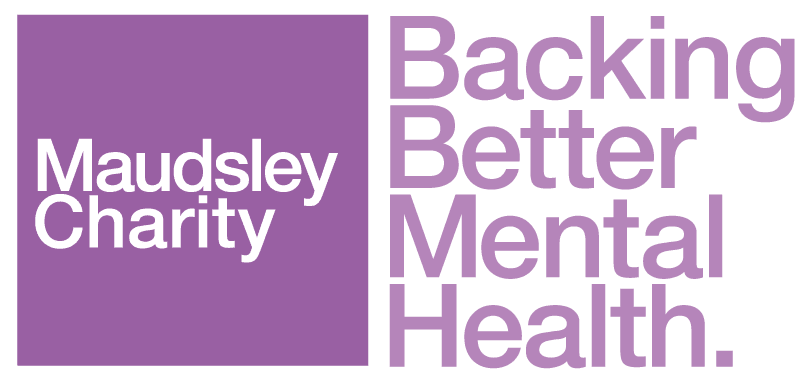
Sarah Carpenter
Artist, Bethlem Gallery
Bethlem Gallery and the Maudsley Charity have made a huge impact on me, personally and professionally and I’m proud to work with them. Over the years of working with them, my artistic practice has developed and grown in unexpected directions. I’ve managed to work in different capacities – as a designer, an artist, giving talks and facilitating workshops.
The most important thing for me has been the people. We are a community: the gallery team, the artists and all its supporters who recognise the magic and importance of the space. Mental health is at the heart of every decision and individual experience is nurtured. I truly enjoy my work, it is fascinating, and I trust that those who I work with have my best interests at heart.
“My art practice allows me to think through difficult emotions in a safe way”
My creative career began as a dance and theatre teacher/choreographer and director. I then moved into taking photographs. I worked as artist in this medium alongside having lots of different admin jobs. In an effort to work in a more creative role, I took a graphic design course at London College of communication. Here I spent a lot of time working in traditional print techniques which then lead me to work much more freely as an artist with different materials and different mediums.
The Bethlem Gallery has shaped my practice into that of an artist researcher. Over the last few years I have become more process-led and interested in the act of enquiry, as opposed to a more commercial path. The Gallery has enabled me to work alongside mental health researchers, and to identify potential problems within the field of mental health and use creative thinking to come up with solutions. My hope initially when I became an artist was to communicate my own experiences and help to destigmitise mental illness. Since then I have been encouraged to focus on making academic research more widely accessible, acting as a middle man or translator.
I was motivated to work in this capacity because of my own experience of mental illness. Having been initially treated at the Maudsley Hospital for disordered eating, I was then treated for anxiety and depression, and last year I was eventually given a diagnosis of bipolar and emotionally unstable personality disorder. Working in this arena is very close to my heart. My art practice allows me to self sooth, to distract myself and at times think through difficult emotions in a safe way.
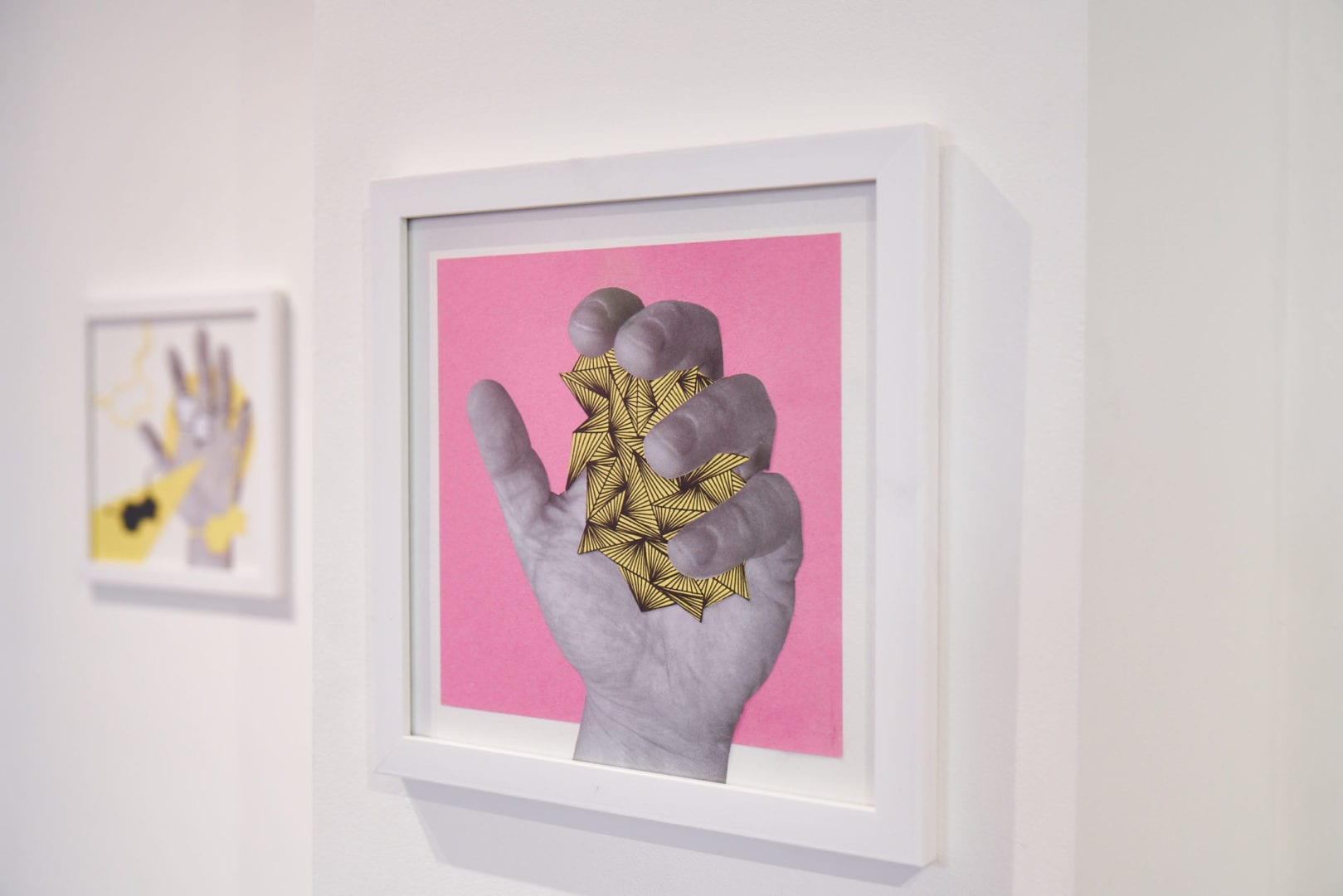
HOLD
The ‘HOLD’ project was the brainchild of Mary Yates who managed to secure funding through the Maudsley Charity to create a permanent public artwork celebrating the International Year of the Nurse and Midwife. Mary approached Bethlem Gallery with her brief and Sam Curtis, the curator, contacted me inviting me to work on the commission. My partner’s mum used to be a nurse so it was something I was keen to be involved in.
Knowing that the work was to be displayed in the reception area of the Maudsley Hospital, just down the corridor from where I was first treated, made the commission even more special for me; I was excited to be able to give back to those who had cared for me.
Involving patients: “each individual story deserves to be told”
I am always aware that everyone’s experience is unique and each individual story deserves to be told. I try to engage as many people as possible in my work and represent as many diverse voices as possible. For this commission, I was fortunate to be able to consult with nurses, learning about their lives and stories and nursing as a career in general, which was really interesting and touching.
I believe it’s imperative that patients are encouraged to be involved in creative activities wherever possible. I was delighted to be able to work with the patients at Bethlem Royal Hospital with the support of one of the amazing occupational therapists. We held a plaster casting workshop resulting in hand casts to go into the final piece.
I know by my own experience, and have also witnessed, the huge impact that art can have on our mental well-being and recovery. It is also a great tool for opening up dialogue. Working with a rich, diverse range of people across disciplines creates the perfect opportunity for sharing and learning.
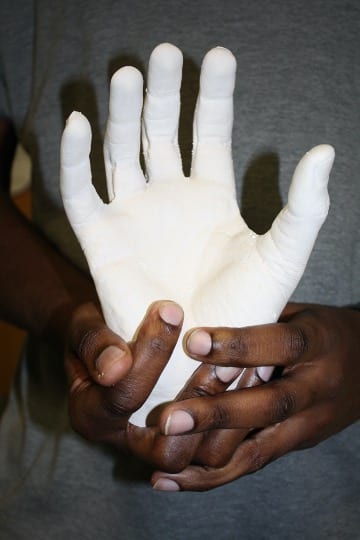
Installation at Maudsley Hospital
When it came to the installation logistics, there were quite a few challenges: not only is the work in a public space, but that space is inside a hospital. On top of that, the installation is permanent so the materials must last a lifetime. We were lucky to have Vivienne Reiss involved who is experienced in this area. Viv helped us think about the cleaning, the safest materials to use, the work’s stability and how the space would be used – all of which informed the design.
Overcoming these obstacles meant working as a team, and engaging specialist craftspeople to help with design and execution. Without this amazing team of experts, installers and advisors, I don’t think we would have been able to complete the project. It was amazing to see the work come together on time despite us being in a global pandemic.
“The piece was a way of saying thank you to nurses for holding us”
Due to COVID, the work can only be seen by patients and staff from a distance, so gauging people’s response in this way is difficult. I found being on site during installation really energising and uplifting as nurses gave their feedback and each saw something unique within the work. Seeing people related to it in different ways and engaging in dialogue with them was wonderful. After launching the work online during a broadcast to the entire Trust, people’s positive and personal emails came pouring in – something that quite overwhelmed me and made me feel extremely privileged and proud to be involved in such an important piece of work.
This piece was a way of saying thank you to nurses for holding us and letting them know that this is reciprocated. Knowing that this message is shared with people day in and day out as they walk into, out of and through that reception space makes me happy; it is a brilliant opportunity to be able to interact with people even if I’m not there in person.
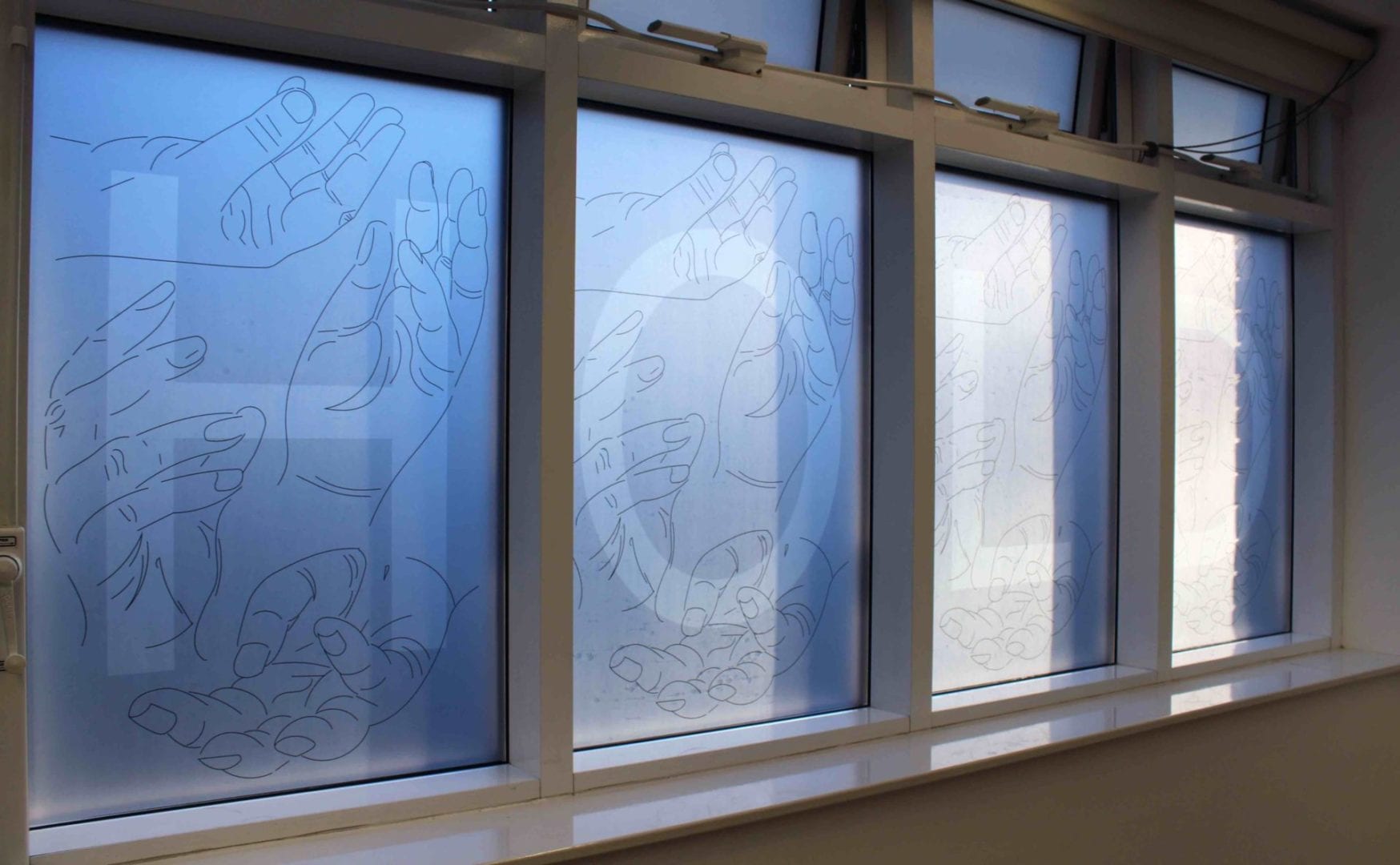
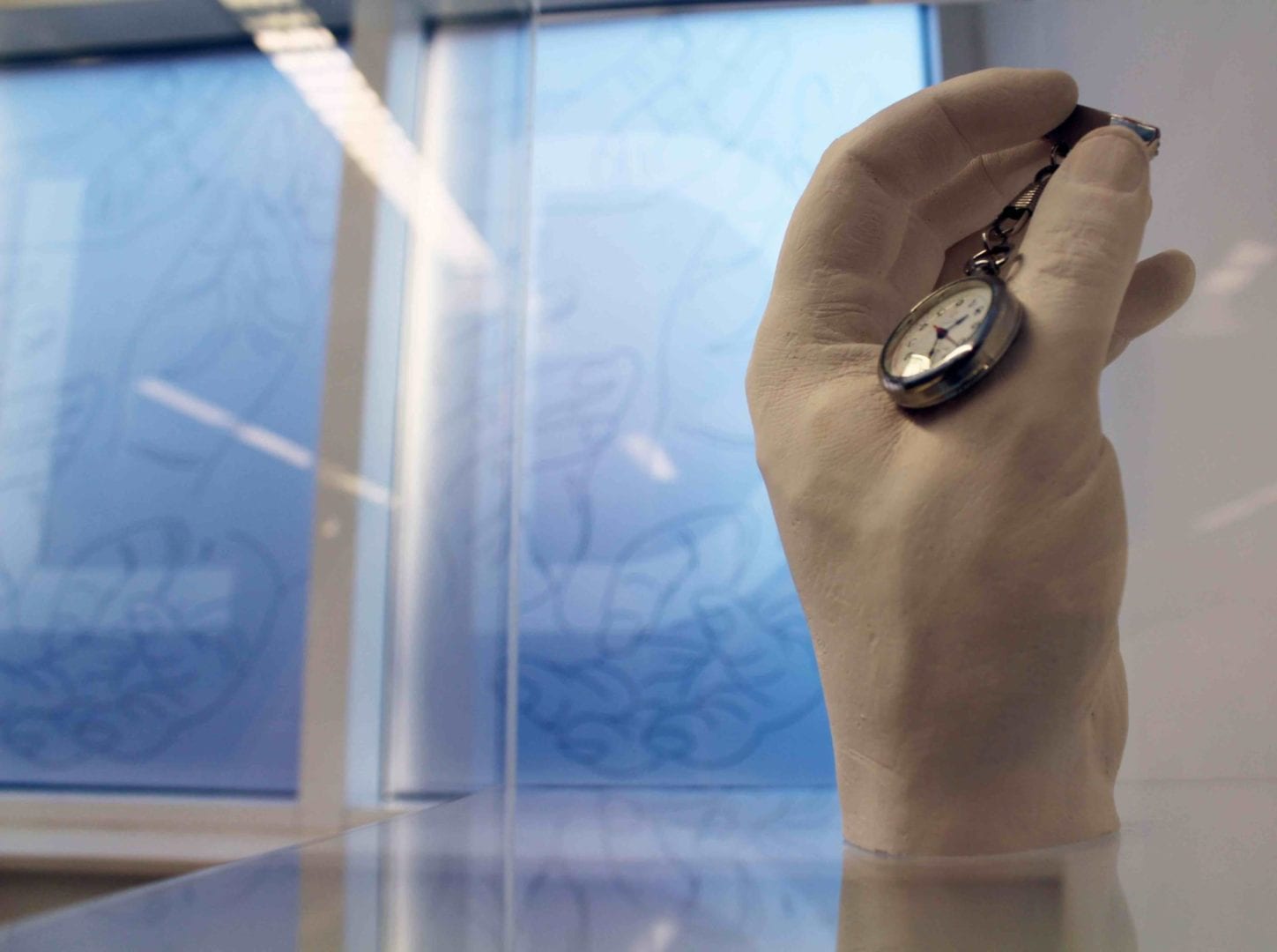
Future plans: patient agency and non-verbal public mental health messaging
Currently I am working with Anna Kolliakou, having been introduced to her by Bethlem Gallery during the ‘Art and Value’ exhibition (12 June – 31 August 2019). We are working on a project entitled ‘Reclaiming Agency: AI and the Power of Narrative Medicine’. For this, I am contracted as an artist in residence for King’s College London. We will be looking at electronic health records and how we can give the patient more agency over their own story within these.
I am also working as an artist researcher, in residence with Bethlem Gallery on the Mental Health and Justice project. This work focuses on metacognition and again agency of the patient, but this time in decision making.
In the future, I would like to see a change in the look of mental health messaging within the public domain to something more real and less generic. I would like to see more use of non-verbal communication techniques and different ways of expressing ourselves to be embraced by society. I’d like visual grammar to be given the same weight and importance as the written word.
At present Bethlem Gallery artist peers and I are being supported to explore what it is/means to be an artist researcher. We hope to quash the idea that the only role of an artist in this arena is to illustrate the work of academic researchers. We are working towards creating our own research methodologies and ways to express findings in our own accessible way.
I just want to continue doing what I’m doing: working with various researchers, psychologists and psychiatrists, those who have different skills, expertise, experiences and interest within mental health. It is this multidisciplinary approach which will help devise more innovative, holistic approaches to how we diagnose and treat mental health, that will connect the mental and physical wellbeing of individuals.
Related reading
-
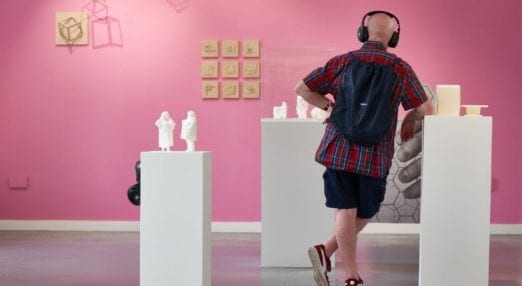
Bethlem Gallery
Providing professional opportunities for artistic practice for current and former SLaM service users
Read more
-
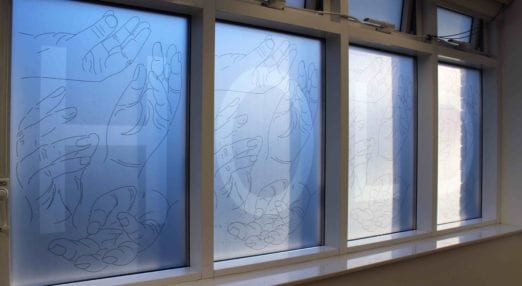
Year of the Nurse and Midwife artwork unveiled at Maudsley Hospital
An artwork to celebrate the International Year of the Nurse and Midwife was unveiled at Maudsley Hospital on 17 December
Read more
